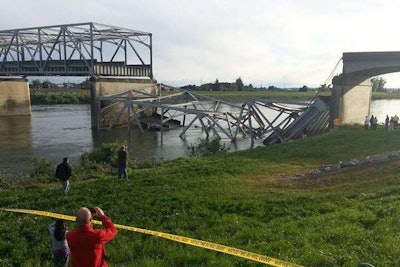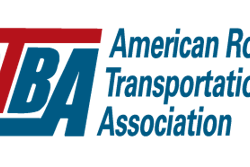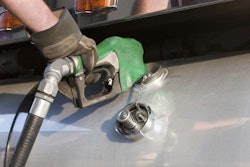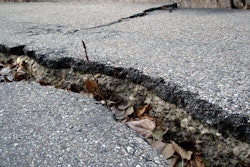 The I-5 bridge that collapse into the Skagit River in Washington state in May was classified as fracture critical. (Photo: Cole Wagoner / Twitter)
The I-5 bridge that collapse into the Skagit River in Washington state in May was classified as fracture critical. (Photo: Cole Wagoner / Twitter)A recent Associated Press analysis of 607,380 bridges in the most recent federal National Bridge Inventory has proven 7,795 — 1.2 percent — of those bridges to be both structurally deficient and fracture critical.
The report also found that 65,605 of the bridges were classified only as “structurally deficient,” while 20,808 were found to be “fracture critical.”
Structurally deficient bridges are those that need rehabilitation or replacement of one major component in order for inspectors to no longer consider the span to be in poor or worse condition. Fracture critical bridges, like the Interstate 5 bridge that collapsed in Washington in May, risk collapse if just one component fails.
Despite the seemingly dire classifications, the report notes that “engineers say the bridges are safe” and that they “are not about to collapse.”
There are thousands of inspectors across the country “in the field every day to determine the safety of the nation’s bridges,” Federal Highway Administrator Victor Mendez said in a statement. “If a bridge is found to be unsafe, immediate action is taken.”
The bridges that are both structurally deficient and fracture critical are located in all 50 states and altogether carry more than 29 million vehicles each day.
Most of these bridges have outlived their projected life spans, which are usually 50 years. Besides their old age, many of these bridges were not built to handle the number of cars that now drive across them each day.
Despite their best efforts, cities and states that want to replace the aging and deteriorating bridges are struggling to fund necessary projects.










